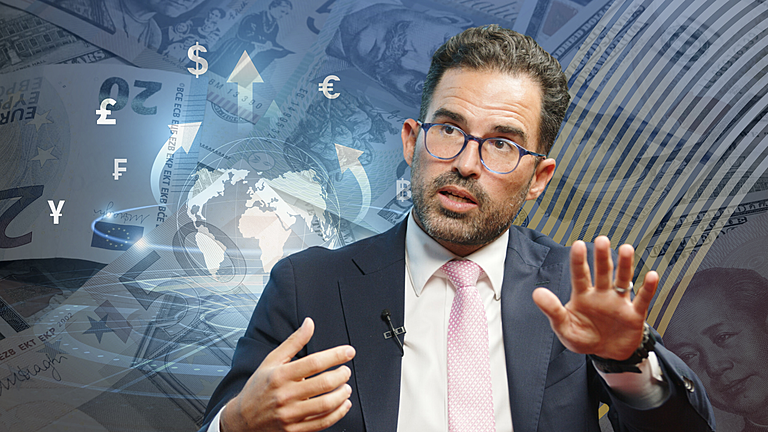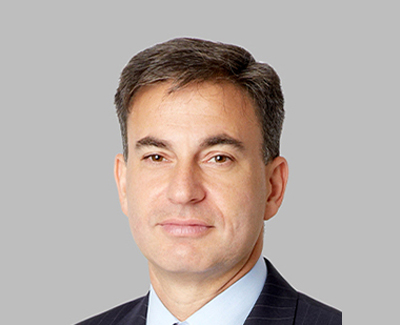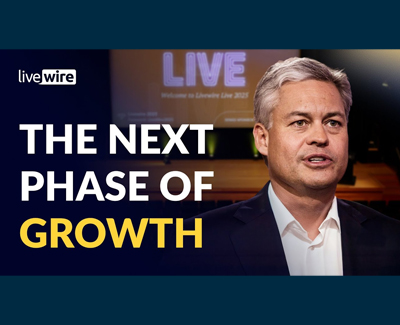Livewire | Income is back – and credit gives you the best seat in the house
Ally Selby, Livewire – The following was published as part of Livewire’s Income Series 2024 on 30 July 2024.
Amid persistent uncertainty about the outlook for interest rates and inflation, income-focused investors are better served by spreading their risk across fixed income assets. That’s the view shared by Teiki Benveniste, Head of Ares Australia Management.
He believes a combination of sovereign bonds and corporate credit is the best way to maximise yield while minimising the risk linked with interest rate volatility.
In the following interview, part of Livewire’s Income Series 2024, Benveniste discusses the pros and cons of both parts of the fixed income universe.
He explains how his team finds the most compelling opportunities within investment-grade credit and bonds, the team’s current positioning, and explores some of the most commonly misunderstood aspects of the asset class.

Why is a combination of bonds and loans the best way to maximise an investor’s income opportunity in credit?
If you look at bonds first, the impact of higher rates has driven lower prices and a small increase in current income. Because bonds are fixed rate assets, the cash interest paid by previously issued bonds has not increased.
Bonds carry interest rate duration risk, which means their price changes in the opposite direction of movements in interest rates. Therefore, buying bonds today can be attractive from a price discount perspective as they carry the potential for their price to pull back to par as they come closer to maturity.
Bonds have a nominal value and a maturity date – if they do not default investors get the nominal value of the bond back even if they only paid 90% of that nominal value to acquire the bond. However, bonds are less attractive from a current yield standpoint. To put that into perspective, the Barclays Global Agg index has an average current yield of 2.9%, which is well below cash rates.
Conversely, loans are floating rate instruments. The interest paid adjusts with the higher base rate. They carry very little interest duration risk as their price doesn’t have to adjust to moves in interest rates, rather their coupon or interest payment does. This has resulted in current yields in loans increasing to circa 8-9%.
In summary, bonds can have both interest rate risk and credit risk while the main risk you are taking with loans is mostly credit risk – their prices move with market sentiment on the risk of defaults, not interest rate risk.
So, we believe, combining loans and bonds can help deliver both the opportunity for higher current income as well as potential capital gains from buying discounted fixed income instruments while keeping duration risk relatively low.
What is the one attribute that distinguishes the Ares Global Credit Income Fund from others in the space?
We believe AGCIF is differentiated as it is dedicated to global credit, with low interest rate risk, combined with no exposure to the lowest credit quality bands of our markets. The main risk is credit risk which we are keenly focused on managing. We believe these features assist AGCIF to meet its objective of providing stable income, downside protection and diversification as
As such, the Fund can serve as a yield and current income enhancer with around 8% current yield (unhedged)1 for 1yr of IR duration, delivered with low exposure to risks that are often already present in Australian investors’ portfolios, such as the Australian economy, Real Estate or banks.
What is your process for identifying the highest returning fixed income assets – and how closely do you hug your benchmark in identifying those investments?
While the strategy is predictable from a risk management perspective, it should behave as you’d expect a low duration global credit allocation to, we take a very tactical approach and are benchmark unaware2. We go where we see the best relative value on offer between the credit asset classes that we invest in.
Importantly, we are not investing through a siloed approach between asset classes. For example, our allocation to loans does not need to be a benchmark-aware allocation. We pick the parts of the loan market we like. We evaluate, for example, BBB-rated credit instruments across bonds, loans, and alternative credit, and invest where we see the best risk-adjusted return opportunities. At the moment, we favour asset-based credit instruments (e.g. CLO debt) for that BBB exposure. When compared to similarly rated corporate bonds, CLO BBB debt tranches currently yield an extra 4.3% in current income3.
What are your current high-level macro views and how is this reflected in the fund positioning?
There has been a lot of volatility in the rates markets, and we believe rates will remain volatile and potentially higher for longer as central banks combat sticky inflation and a robust but slowing economy.
This observation has been a key driver of our positioning in multi-asset credit strategies where we focus on the relative value between credit asset classes. In short, we are not taking directional bets on rates, as we are not a duration manager – we are focused on managing credit.
For Ares, more uncertainty around rates implies more volatility for fixed rate credit instruments.
At the end of last year when the market was pricing in more than six rate cuts for 2024, we remained cautious around adding fixed rate credit instruments as we felt the risk of a hawkish surprise made bonds relatively less attractive versus high-quality floating rate loans that were generating significantly higher current income.
Now, as bouts of volatility hit fixed rate corporate bonds, we have added selectively to discounted bonds that could have a catalyst to be repaid early, while still keeping interest rate duration low.
A little over six months ago, your view was that corporate defaults would tick up but wouldn’t hit worrying levels. Has this played out and where do you see default levels for the next 6-12 months?
Yes. 12 months ago we felt that credit markets were likely to see higher default rates as marginal credits were likely to struggle in a higher rate environment. Our view was that defaults were likely to go back to historical averages rather than extreme levels such as the GFC or COVID crisis, and in fact, there was less of an uptick than we had predicted as corporates continued to see on average increased EBITDA and limited walls of maturity on their debt.
Looking ahead, we still see the case for dispersion between good and bad credit with risks for outsized increase in defaults.
From an overall risk positioning standpoint, despite the fundamental picture remaining somewhat supportive, we are cautious in our positioning as there are many exogenous factors that could upset the apple cart and lead to volatility.
How are you currently positioned across fixed rate versus floating rate, and how does this compare to your benchmark?
We are overweight floating rate assets given the attractive current yield available in loans and CLOs at around 7-9% current1.
We also have approximately 20% of the portfolio invested in discounted fixed rate bonds to add optionality with bonds being repaid early or trading back towards their nominal value.
What is the one area you believe newbie fixed income investors most commonly misunderstand (and what do they need to know?)
Credit is a separate asset class with an AU$6 trillion opportunity set ranging from liquid to illiquid asset classes. We believe transparency is important for investors seeking to better understand this opportunity set. We also believe that looking beyond headline numbers can be beneficial as various parts of the credit market will show value at different points in time. This could lead to missing out on potentially great opportunities to enhance current yield and provide much-needed diversification in Australian investors’ portfolios.
Where does this fund typically sit in an investor’s portfolio?
The Fund aims to be a higher yielding fixed income strategy in comparison to traditional fixed income strategies, so we generally see allocations from traditional fixed income but also from growth assets.
The credit asset classes in which we invest (e.g. bonds, loans, and other alternative credit assets) have generated returns in line with growth assets but with 40% less volatility over a 15-year period4. So, the Fund may suit investors seeking to take some equity risk off the table in favour of potentially less volatile and more income-driven returns available in credit asset classes.
Then the fact that we do not invest in the lowest credit quality bands of our markets means the strategy is quite defensive and should experience lower volatility and default risk than higher beta credit markets. With its low duration focus and high level of current income, we believe this makes it a compelling strategy for investors looking to reduce duration risk and increase income generation within their fixed income allocation.
(1) Source: Ares Australia Management as at May 2024. Yield is an attribute of underlying investments and does not represent a return to investors.
(2) The fund is actively managed and does not track a benchmark.
(3) Source: Ares Australia Management, as at 31 March 2024.
(4) Source: Ares Australia Management, based on representative indices, as at 31 March 2024.
The interview was conducted in June 2024. This material has been prepared by Ares Australia Management Pty Ltd ABN 51 636 490 732 AFSL 537666 (AAM), the investment manager of the Ares Global Credit Income Fund (ARSN 639 123 112) (the Fund) and is current as at the date of publication. Fidante Partners Limited ABN 94 002 835 592 AFSL 234668 (Fidante) is a member of the Challenger Limited group of companies (Challenger Group) and the responsible entity of the Fund. Other than information which is sourced from Fidante in relation to the Fund, Fidante is not responsible for the information in this publication, including any statements of opinion. It is general information only and is not intended to provide you with financial advice or take into account your objectives, financial situation or needs. You should consider, with a financial adviser, whether the information is suitable to your circumstances. The Fund’s Target Market Determination and Product Disclosure Statement (PDS) available at https://www.fidante.com should be considered before making a decision about whether to buy or hold units in the Fund(s). To the extent permitted by law, no liability is accepted for any loss or damage as a result of any reliance on this information. Past performance is not indicative of future performance. Any projections are based on assumptions which we believe are reasonable but are subject to change and should not be relied upon. Fidante has entered into arrangements with Ares and AAM in connection with the distribution and administration of financial products managed by Ares or AAM. In connection with those arrangements, Fidante or AAM may receive remuneration or other benefits. Investments in the Fund are subject to investment risk, including possible delays in repayment and loss of income or principal invested. The performance, the repayment of capital or any particular rate of return on your investments are not guaranteed by any member of the Challenger Group nor AAM or its related bodies corporate. The Fund is available to persons in Australia and New Zealand and is subject to the terms and conditions described in the PDS. New Zealand investors, please also read https://www.fidante.com/au/important-Information-for-nz-investors


